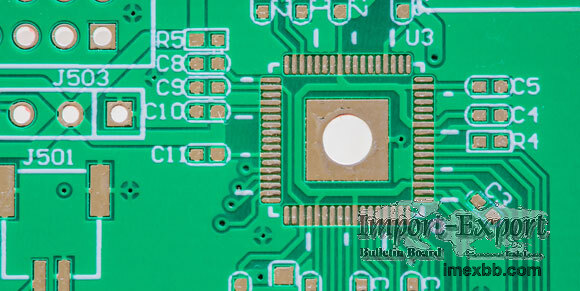 |
 |
Home > Offers to Sell > Energy > Crude Oil
| Contact: | zfpcba |
|---|---|
| Company: | Zhongfeng Electronics Co., Ltd. |
| 810 Shang Xing Buliding, Shajing Town, Bao'an District, Shenzhen, China, | |
| SHENZHEN 518105 | |
| China | |
| Phone: | 18138824745 |
| E-Mail: | |
| Date/Time: | 11/9/21 6:45 GMT |
FR4 PCB
PCBA is a process requiring knowledge covering PCB manufacturing assembly, PCB
design, fabrication and a strong understanding of the final product. ZF is a
professional pcb manufacturing companies with high-quality, all of our products
have obtained ISO9001, ISO13485:2016, IATF16949:2016, IPC-A-610E, UL, RoHS
certifications.
PCBs have long been an essential part of electronic circuits. As a result, most
of the electrical engineers involved in the production of these boards are
familiar with the different materials used to manufacture them. FR4 is one of
the most popular materials used by fr4 pcb manufacturer. What makes it popular?
You will find information about the FR4 material used in fr4 printed circuit
board down below.
Introduction to FR4 PCB material
FR in FR4 denotes flame retardant and FR4 distinguishes the material from other
materials in the category. The glass pcb fiber fr4 structure provides
structural stability to the material. The glass fiber layer is covered with a
flame retardant epoxy resin, which brings durability and robust mechanical
properties to the material. All these characteristics make fr pcb popular among
electronics manufacturers.
Advantages of the popularity of FR4 PCBs
1. FR4 is a low-cost material.
2. It has a high dielectric strength, which contributes to its electrical
insulation properties.
3. The material has a high strength-to-weight ratio and is lightweight.
4. It is moisture-proof and also has a relative temperature.
5. It has an excellent electrical loss performance.
6. FR4 does not absorb water and is therefore also suitable for various marine
PCB applications.
7. The material is yellow to light green and is ideal for any application.
All these features make it suitable for a wide range of environments.
How is FR4 organized on a conventional FR4 PCB?
FR4 can act as the base for any PCB. The material is laminated with a copper
foil layer, which is laminated using heat as well as an adhesive. The copper
foil can be used to laminate the material from one or both sides.
Tips for choosing the right FR4 material for your FR4 PCB
It is vital to use the correct thickness of material for the construction of
FR4 PCBs. Thickness is measured in inches, such as inches, feet, and yards.
There are several elements to consider when selecting pcb material fr4 for your
PCB. The following tips will simplify your selection process.
1. Select thin FR4 material for building panels with space constraints. The
thin material can support the various precision components needed to make
devices such as Bluetooth accessories and USB connectors. They are also
suitable for larger projects where engineers wish to focus on space-saving
design.
2. The thin FR4 material is suitable for applications where flexibility is
required. For example, using the thin material for automotive and medical PCBs
is ideal as these PCBs need to be bent regularly.
3. Avoid choosing thinner materials for PCB designs with recesses as it
increases the risk of damage or fr4 pcb board breakage.
4. The thickness of the material affects the weight of the fr4 circuit board
and may also affect the compatibility of the components, which means that a
thin FR4 material would logically facilitate the manufacture of lighter boards
and thus the production of lighter electronics. These lightweight products are
attractive and easy to transport.
When to avoid using FR4 PCB material?
FR4 material is not the right choice if your application requires any of the
following.
1. Excellent heat resistance. If PCBs are required to be applied in high-
temperature environments, it is recommended that FR4 materials are not used.
For example, for PCBs in aerospace applications, FR4 material is not the right
choice.
2. Lead-free soldering. If your customer requires a RoHS compliant PCB, lead-
free soldering must be used. During lead-free soldering, reflow temperatures
peak and reach 250 degrees Celsius and are not tolerated by FR4 materials due
to their low-temperature resistance.
3. High-frequency signals. When exposed to high-frequency signals, FR4 boards
are unable to maintain a stable impedance. As a result, fluctuations can occur
and may affect the integrity of the signal.
Due to their popularity and widespread use, it is easy to find FR4 PCB
materials on the market today with a wide range of specifications and
functions. Such an abundance of choice can sometimes make selection difficult.
In such cases, it is essential to discuss your requirements with the
manufacturer.
Minimum Order: 1 gallons
SOURCE: Import-Export Bulletin Board (https://www.imexbb.com/)
Similar Products:Not exactly what you are looking for? Post an Offer to Buy!
![]()
© 1996-2010 IMEXBB.com. All rights reserved.
|
|
|






